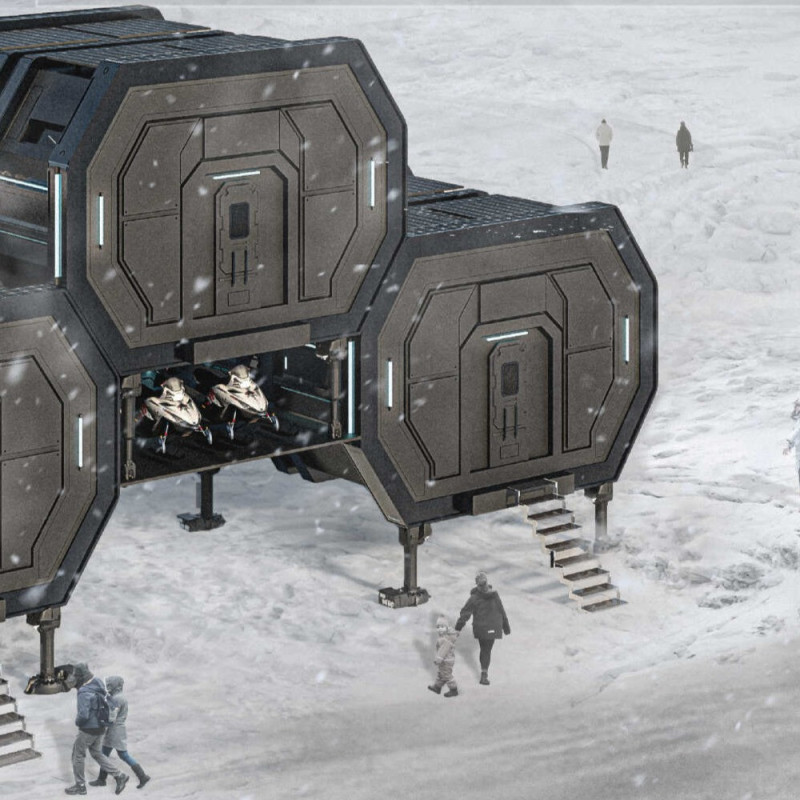5 key facts about this project
At its core, the project represents an innovative approach to contemporary design, emphasizing transparency, connectivity, and flexibility. The architectural design is characterized by clean lines and a harmonious blend of materials, showcasing a modern sensibility that is both refined and accessible. The use of expansive glass facades allows natural light to permeate the interior spaces, creating an inviting atmosphere that encourages interaction among occupants. This transparency is not solely aesthetic; it symbolizes the commitment to openness and community, allowing passersby to glimpse the activities occurring within, thereby fostering a sense of inclusion.
Functionally, the project is divided into various zones, each tailored to accommodate specific activities. Public spaces are seamlessly integrated with private areas, promoting a fluidity that is essential for a dynamic space. The central atrium acts as the heart of the building, serving as a gathering place and facilitating movement throughout the different levels. This design choice not only enhances circulation but also provides visual continuity across the varied functions that the architecture supports.
Materiality plays a significant role in the overall design concept. The project employs a mix of traditional and contemporary materials, including reinforced concrete, steel, and sustainably sourced timber. This thoughtful selection not only addresses structural requirements but also reflects a conscious effort to incorporate environmentally friendly practices. The use of timber, in particular, introduces a warm texture that contrasts with the sleekness of the steel and glass, creating a balanced sensory experience that resonates with users and visitors alike.
Unique design approaches are evident throughout the project, particularly in how it responds to the local climate and environmental considerations. The architecture incorporates passive design strategies that reduce energy consumption, such as strategically placed overhangs and sunshades that mitigate solar gain while maximizing daylight. Green roofing systems contribute to thermal performance and provide additional green spaces that enhance biodiversity within the urban setting.
The landscape surrounding the building is equally considered, designed to harmonize with the architectural form. Outdoor areas are woven into the project, offering spaces for relaxation and informal gatherings. These elements foster a connection with nature, which is increasingly recognized as vital in urban environments.
As an architectural project, it embraces innovation while respecting its cultural and historical context. The collaborative efforts of the architects, engineers, and other stakeholders ensure that the design not only meets contemporary needs but also anticipates future demands. The integration of smart technologies within the building systems exemplifies a commitment to not only sustainability but also to enhancing the user experience through modern conveniences.
This project stands as a testament to the potential of architecture to enhance urban life. The contemporary design and thoughtful integration of materials and functions create a space that is not only visually appealing but also deeply functional. For those interested in exploring the nuances of architectural plans, sections, and designs that breathe life into this project, further investigation into the presentation is encouraged. Engaging with these details will provide a deeper understanding of the ideas that inform this architectural endeavor and its impact on the surrounding community.























